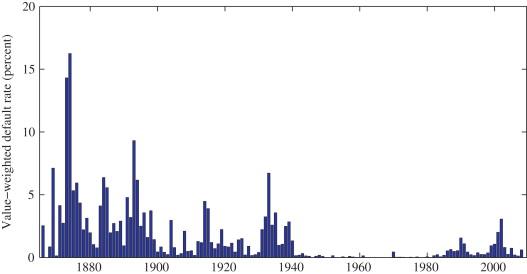In the ever-evolving tapestry of global finance, where the only constant is change, the landscape of credit risk is being reshaped by a confluence of unprecedented economic trends. As the world emerges from the shadows of a pandemic, grapples with geopolitical tensions, and navigates the complexities of digital transformation, financial markets are witnessing a seismic shift in how credit risk is perceived and managed. This article delves into the latest economic currents influencing credit risk, offering a comprehensive analysis that is as insightful as it is timely. With an authoritative lens, we will explore how these trends are redefining the contours of risk assessment, influencing investor behavior, and challenging traditional financial paradigms. Welcome to a journey through the intricate dynamics of credit risk in today’s financial markets, where understanding the nuances of these trends is not just beneficial but essential for navigating the future of finance.
Emerging Market Dynamics and Their Impact on Credit Risk
In recent years, the dynamics of emerging markets have been pivotal in reshaping the landscape of credit risk. These markets, characterized by rapid economic growth and increasing integration into the global economy, present both opportunities and challenges for investors. Volatility in currency exchange rates, often driven by political instability or sudden shifts in economic policy, can significantly impact the creditworthiness of borrowers in these regions. Additionally, the dependency on commodity exports makes these economies susceptible to global price fluctuations, further complicating credit risk assessments.
Investors and financial institutions must navigate a complex array of factors when evaluating credit risk in emerging markets. Key considerations include:
- Regulatory Environment: Understanding the local regulatory framework is crucial, as it can influence the stability and predictability of financial markets.
- Political Risk: Political upheaval or changes in government policy can lead to increased uncertainty and affect borrowers’ ability to meet their obligations.
- Economic Indicators: Monitoring GDP growth, inflation rates, and employment levels provides insights into the overall economic health and potential credit risks.
By staying informed and adapting to these evolving dynamics, stakeholders can better manage and mitigate the risks associated with lending and investing in these vibrant, yet unpredictable, markets.
Navigating Interest Rate Fluctuations: Strategies for Financial Stability
In the ever-evolving landscape of financial markets, interest rate fluctuations pose a significant challenge to maintaining financial stability. Understanding and anticipating these changes is crucial for investors and financial institutions aiming to mitigate credit risk. The current economic trends highlight a few strategies that can be pivotal in navigating these fluctuations effectively:
- Dynamic Portfolio Management: By actively adjusting asset allocations in response to interest rate changes, investors can better manage risk and optimize returns. This involves a keen analysis of market indicators and a flexible approach to asset diversification.
- Hedging Strategies: Utilizing financial instruments such as interest rate swaps or options can provide a buffer against adverse rate movements. These tools allow for the locking in of rates or the establishment of protective positions, thereby reducing exposure to volatility.
- Scenario Planning: Developing comprehensive models that simulate various interest rate scenarios can help institutions prepare for potential impacts on their portfolios. This proactive approach enables more informed decision-making and strategic planning.
By adopting these strategies, financial entities can not only safeguard their assets but also capitalize on opportunities that arise from market shifts. As the economic environment continues to change, staying informed and adaptable remains the cornerstone of financial resilience.
The Role of Technological Advancements in Credit Risk Assessment
In the dynamic landscape of financial markets, technological advancements are revolutionizing how credit risk is assessed, offering unprecedented precision and efficiency. Artificial Intelligence (AI) and Machine Learning (ML) are at the forefront, enabling financial institutions to analyze vast datasets with remarkable speed and accuracy. These technologies facilitate the identification of patterns and anomalies that were previously undetectable, thus enhancing predictive capabilities. Blockchain technology is also making significant strides by ensuring transparency and security in credit transactions, reducing the risk of fraud and enhancing trust among stakeholders.
- AI and ML Algorithms: These tools are instrumental in automating credit scoring processes, allowing for real-time analysis and decision-making.
- Big Data Analytics: By leveraging large volumes of data, financial institutions can gain deeper insights into borrower behavior and market trends.
- Blockchain: Offers a decentralized ledger system that enhances the integrity and reliability of credit information.
- Cloud Computing: Facilitates scalable data storage and processing, enabling more comprehensive risk assessments.
As these technologies continue to evolve, they are not only reshaping credit risk assessment but also redefining the very nature of financial interactions. Institutions that harness these innovations effectively are poised to gain a competitive edge, ensuring more robust risk management strategies and fostering sustainable growth in the ever-changing economic environment.
Proactive Risk Management: Best Practices for Financial Institutions
In the ever-evolving landscape of financial markets, understanding the latest economic trends is crucial for managing credit risk effectively. Financial institutions must stay ahead by adopting a proactive approach to risk management, ensuring that they are not merely reacting to changes but anticipating them. Globalization, technological advancements, and regulatory shifts are reshaping the dynamics of credit risk, demanding a more nuanced strategy. Institutions are encouraged to integrate comprehensive data analytics and leverage artificial intelligence to identify potential risks before they manifest.
- Embrace Predictive Analytics: Utilize advanced data models to forecast potential credit defaults and market fluctuations.
- Enhance Risk Culture: Foster an organizational culture that prioritizes risk awareness and continuous learning.
- Stay Compliant: Keep abreast of evolving regulations to ensure compliance and avoid unnecessary penalties.
- Invest in Technology: Leverage cutting-edge technologies to streamline risk assessment processes and improve decision-making.
By embedding these best practices into their operational framework, financial institutions can navigate the complexities of modern credit risk with confidence, turning potential threats into opportunities for growth and stability.





